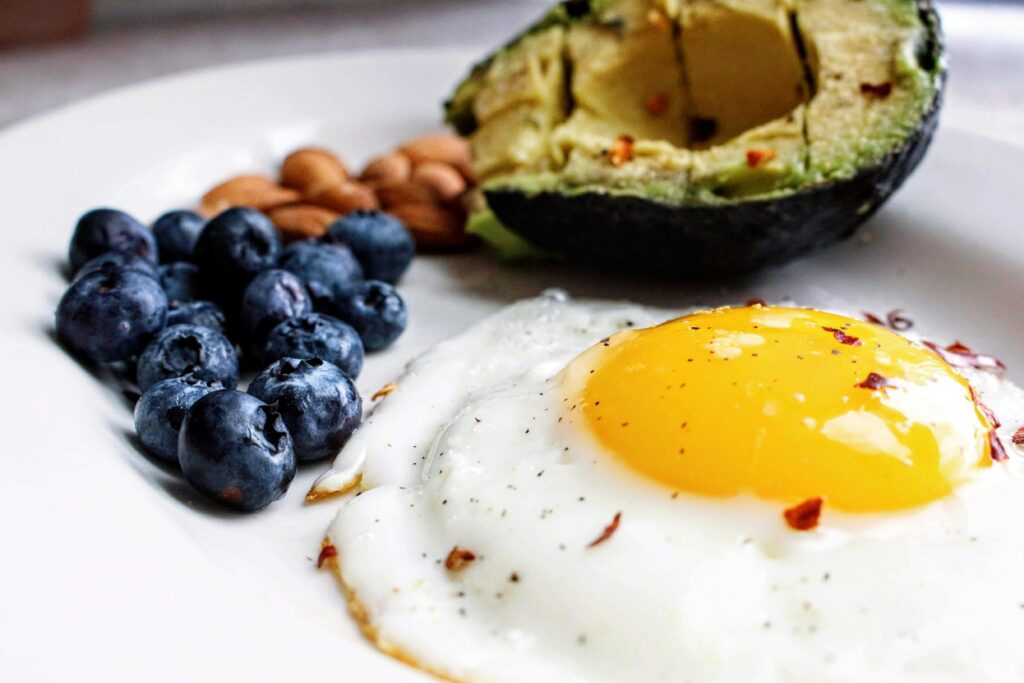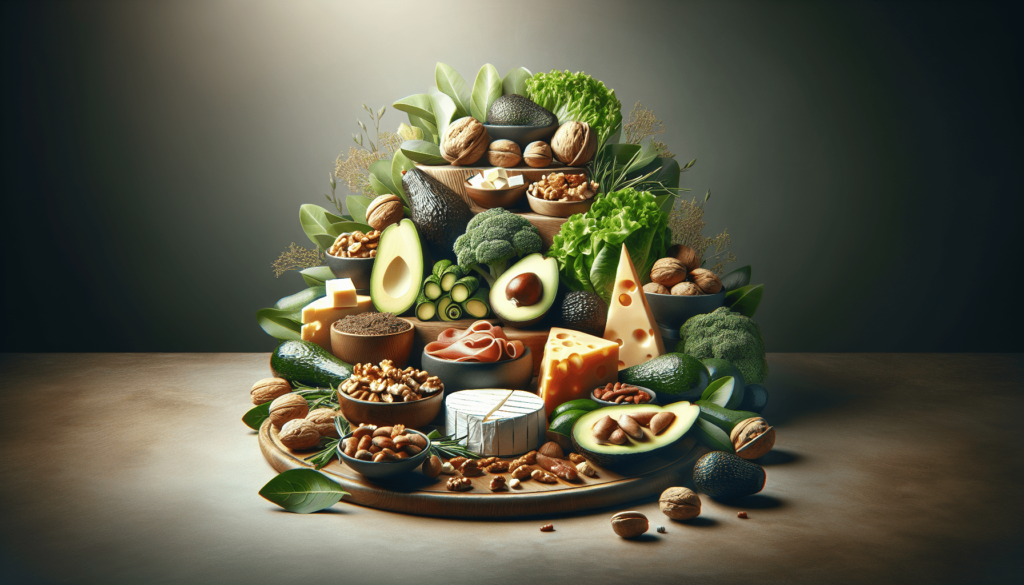Embarking on your keto journey can feel like stepping into a vibrant, ever-evolving world full of delicious possibilities and discoveries, especially when it comes to navigating the landscape of emerging keto-friendly foods. “The Essential Keto Glossary: Key Terms and Concepts Explained” serves as your comprehensive guide through this exciting terrain, offering insights into the latest in keto cuisine that’s set to revolutionize your meal plan. With a focus on unveiling the newest low-carb products, the health benefits they bring, and how they seamlessly fit into your dietary goals, this article promises to enrich your knowledge and spark your curiosity to explore innovative ingredients and the companies pioneering these advancements. Prepare to be inspired as you unlock the future of keto eating, making your diet not only more flavorful but also aligned with the latest food trends and nutritional research.

Get Your Free Keto Recipe eBook Now!
Ketosis
Definition and how it works
Ketosis is a natural metabolic state where your body, in the absence of sufficient carbohydrates, starts to burn fat for fuel instead of glucose. This process produces ketones, which can be used by your body and brain for energy. You typically enter ketosis by following a ketogenic diet, which is high in fats, moderate in proteins, and very low in carbohydrates.
Signs and symptoms of ketosis
When you enter ketosis, there are some tell-tale signs you might notice. These include weight loss, increased energy and focus, decreased appetite, and a change in the smell of your breath or urine due to the presence of ketones. Keep in mind, however, that the intensity of these symptoms can vary from person to person.
Benefits of achieving ketosis
Achieving ketosis comes with a host of benefits, including weight loss, improved insulin sensitivity, and potentially a reduction in inflammation. Some people also experience enhanced mental clarity and focus, as well as an increase in energy levels once they adapt to using fat for fuel.
Macronutrients
Definition of macronutrients in context of keto
In the context of a ketogenic diet, macronutrients include fats, proteins, and carbohydrates, but the emphasis is significantly different than in other diets. The keto diet focuses on high fat, moderate protein, and very low carbohydrate intake, aiming to shift the body into a state of ketosis.
Role of carbohydrates in a keto diet
Carbohydrates play a minimal role in the keto diet, typically limited to about 5-10% of your daily caloric intake. This restriction is crucial to maintain ketosis, as consuming too many carbs can quickly shift your body out of this fat-burning state.
Understanding fats: good fats vs bad fats
Not all fats are created equal, especially on a keto diet. Good fats, such as those from avocados, nuts, seeds, and olive oil, are encouraged because they provide long-lasting energy and help keep you full. On the other hand, bad fats, like trans fats found in processed foods, should be avoided as they can lead to heart disease and other health issues.
Proteins in a ketogenic diet
Proteins are important on a ketogenic diet, but it’s essential to consume them in moderation, typically making up about 20-25% of your daily caloric intake. Too much protein can lead to gluconeogenesis, where the body converts excess protein into glucose, potentially knocking you out of ketosis.
Get Your Free Keto Recipe eBook Now!
Micronutrients
Importance of vitamins and minerals
Vitamins and minerals are crucial for overall health, supporting everything from bone health to immune function. On a ketogenic diet, it’s important to focus on micronutrient intake to avoid deficiencies that can be caused by the diet’s restrictions.
Common micronutrient deficiencies in keto
Common deficiencies in a keto diet include magnesium, potassium, and sodium. This is largely because the diet restricts many of the foods that provide these nutrients. A deficiency in these micronutrients can lead to symptoms like fatigue, headaches, and muscle cramps.
Sources of essential micronutrients for keto dieters
To combat potential deficiencies, it’s important to consume a variety of keto-friendly foods rich in these micronutrients. Leafy greens, nuts, seeds, and avocados are excellent sources of magnesium and potassium, while adding a pinch of salt to your meals can help manage your sodium levels.
Keto Flu
What is keto flu and why does it happen
The keto flu is a common experience for people new to the ketogenic diet, characterized by flu-like symptoms that occur as your body adapts to using fat as its primary fuel source. It happens because of electrolyte imbalances and the initial shock to your system from drastically reducing carbohydrate intake.
Common symptoms of keto flu
Symptoms of the keto flu include headache, fatigue, dizziness, nausea, irritability, and difficulty sleeping. These symptoms typically subside after a few days as your body adjusts to ketosis.
Tips for managing and mitigating keto flu symptoms
To manage keto flu symptoms, ensure you’re staying hydrated, replenishing electrolytes (especially sodium, potassium, and magnesium), and getting adequate rest. Eating small, frequent meals can also help stabilize your energy levels during this transition period.

Emerging Keto Foods
Introduction to the latest trends in keto-friendly foods
The world of keto-friendly foods is continuously evolving, with new products and ingredients designed to make the ketogenic diet more enjoyable and sustainable. From low-carb flour alternatives to innovative snack options, there’s always something new to discover.
Health benefits and nutritional profiles of new keto foods
Many of these emerging keto foods are not only low in carbohydrates but also rich in healthy fats and fiber, making them excellent options for maintaining nutritional ketosis. They often offer additional health benefits, such as improved digestion and increased satiety.
How to incorporate new keto foods into your diet plan
Incorporating new keto foods into your diet can keep meals exciting and improve your overall nutritional intake. Experiment with different recipes and products to find what works best for you, and don’t be afraid to try innovative ingredients that can substitute for higher-carb options.
Future predictions for keto food trends
As the keto diet continues to gain popularity, we can expect to see more keto-friendly products hitting the shelves, including plant-based options and sustainable food choices. The focus will likely remain on whole, nutrient-dense foods that support a ketogenic lifestyle.
Intermittent Fasting (IF) and Keto
Overview of intermittent fasting
Intermittent fasting involves cycling between periods of eating and fasting, which can complement a ketogenic diet by helping to further stabilize blood sugar levels and enhance ketone production.
Benefits of combining intermittent fasting with a keto diet
Combining IF with a keto diet can amplify the benefits of both approaches, leading to potentially quicker fat loss, improved metabolic health, and even better cognitive function due to the synergistic effects on your body’s ability to use ketones more efficiently.
Types of intermittent fasting suitable for keto dieters
Keto dieters might find the 16/8 method (fasting for 16 hours with an 8-hour eating window) or the 5:2 approach (eating normally for 5 days and reducing caloric intake for 2 non-consecutive days) to be particularly suitable. These methods can easily be adapted to fit into a ketogenic lifestyle.

Keto-friendly Sweeteners
Understanding the need for keto-friendly sweeteners
Reducing sugar intake is a key aspect of the ketogenic diet, but that doesn’t mean you have to give up sweetness altogether. Keto-friendly sweeteners can help satisfy your sweet tooth without kicking you out of ketosis.
Examples of keto-approved sweeteners
Stevia, erythritol, and monk fruit are popular choices that have little to no impact on blood sugar levels, making them ideal for keto dieters. It’s important to choose pure forms of these sweeteners without any added sugars or bulking agents.
The impact of sweeteners on ketosis and insulin response
While keto-friendly sweeteners are generally considered safe for maintaining ketosis, individual responses can vary. It’s wise to monitor how these sweeteners affect your blood sugar and ketone levels, as well as how they impact your cravings and satiety.
Net Carbs
Definition of net carbs
Net carbs refer to the amount of carbohydrates in a food that can be digested and used for energy, calculated by subtracting fiber and certain sugar alcohols from the total carbohydrates. This number is more relevant for keto dieters concerned with staying in ketosis.
How to calculate net carbs
To calculate net carbs, look at a food’s nutrition label, note the total carbohydrates, and then subtract the dietary fiber and some sugar alcohols (like erythritol) since they don’t significantly affect blood sugar levels. The result is your net carbs.
The significance of net carbs in a keto diet
Focusing on net carbs allows you to include a wider variety of foods in your diet while still maintaining ketosis. It acknowledges that not all carbs have the same effect on your body, helping you make informed choices about the foods you eat.

MCT Oil
What is MCT oil and its benefits
MCT oil is a supplement made from a type of fat called medium-chain triglycerides. It’s highly sought after in the keto community for its ability to rapidly provide energy and help the body produce ketones, potentially making it easier to maintain a state of ketosis.
How MCT oil supports ketosis
MCT oil is directly absorbed and transported to the liver, where it’s quickly converted into ketones. This can provide an immediate source of energy for your brain and body, even if you’re just starting the diet or trying to get back into ketosis after a slip-up.
Ways to incorporate MCT oil into your keto diet
MCT oil is versatile and can be added to your morning coffee, smoothies, or salad dressings. It’s important to start with a small amount and gradually increase to avoid digestive discomfort, as MCT oil can be potent.
Eating Out and Social Events
Challenges of maintaining keto in social settings
Eating out and attending social events on a keto diet can be challenging, as many common foods are high in carbs. However, with a bit of planning and knowledge, you can navigate these situations successfully without breaking your diet.
Tips for choosing keto-friendly options at restaurants
Look for dishes that focus on proteins and vegetables, and don’t be afraid to ask for modifications, such as substituting starchy sides with a salad or extra veggies. Most restaurants are accommodating of dietary restrictions nowadays.
How to navigate social events without breaking your keto diet
When attending social events, consider eating beforehand if you’re unsure about the food options that will be available. Another strategy is to bring a keto-friendly dish to share, ensuring you’ll have something appropriate to eat while also introducing others to the benefits of your dietary choices.

